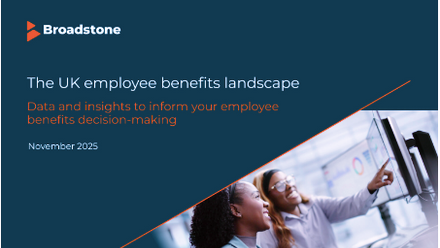Ways to mitigate the affect of inflation on group risk benefits
Inflationary pressures and the soaring cost of living have been a challenge for employers for the past three years and resulted in rising costs across all aspects of a business.
Although price inflation is coming down from its peak of 11% in 2022 - and is expected to be 2% by the end of 2025, its impact will linger on, with high prices for goods and services the new reality.
But when it comes to group risk benefits such as life insurance (death in service), critical illness and income protection, which are at the core of employee benefit packages, it’s a slightly different picture.
Benefits in the protection market are not affected directly by price inflation in the same way as other benefits such as medical insurance might be.
In fact, the underlying rates for buying these benefits for employers are pretty similar to what they may have been two decades ago.
It’s the indirect effect of wage inflation, together with a rise in the number of claims that leads to group benefit costs going up – both of which can be difficult for firms to mitigate.
Drivers of rising costs
High inflation is usually accompanied by a demand for higher salaries as staff try to keep pace with the cost of living. Wage inflation in the UK grew by around 6.6% in November 2023, although, adjusted for inflation, wages only grew in real terms by 1.4%. As salaries rise, so do the costs associated with some risk benefits.
The only way to mitigate the effect of wage inflation on these costs is to cut salaries, but this can compromise employee welfare and hit recruitment and retention, and so is not recommended.
The second factor that hits insurance costs is the number of claims. Since the Covid-19 pandemic new claim patterns have emerged. According to Group Risk Development (GRiD), Covid-19 was a significant cause of an increase in Group Life (death in service) claims in 2020 and 2021, third after cancer and heart disease.
The number of Covid-19 related group life claims have since fallen, but the effects of long-Covid on employees, and therefore on other protection insurance claims, is still being felt. The rise in long-term sick leave and in other healthcare claims post-Covid are still contributing to inflationary pressures in the protection market.
Mitigating costs
For employers there are only two ways to mitigate inflationary pressures in group risk benefits – reducing the value and number of claims. As group risk benefits are a safety net should something happen, employers need to concentrate on keeping employees fit and healthy, so they don’t need to make a claim.
Therefore, refocusing their health and wellbeing strategy and ensuring it’s fit for purpose and supporting the workforce where it is needed most is recommended.
Enhancing employee wellbeing, providing preventive healthcare, and implementing interventions to expedite recovery and return to work is key. This shift in benefits strategies towards prevention rather than cure is something protection insurers have long since recognised as the way to reduce claims.
Insurers now offer a range of value-added products to support employee health and wellbeing including EAPs, mental health support and online GPs through to health screening, rehabilitation, and dental support, to name a few.
Employers can leverage these value-added features in insurance products, as well as introduce other health and wellbeing initiatives and services to reduce the likelihood of employees having to make a claim.
By taking this approach, employers can not only improve the health and wellbeing of their workforce but keep group risk benefit claims low.
To conclude
At a time when employers are faced with rising costs from recruitment and labour costs to medical insurance, they should be reassured that group risk benefits are not going up significantly and don’t have the same volatility.
Group risk benefits are a relatively low and stable cost for employers, and while they have an important role to play should the worst happen, they are only a small part of a well-designed benefit strategy.
Employers should be concentrating on how they can provide the best health and wellbeing support for their budget that keeps people healthy and in work.
This involves optimising value-added products offered by insurers and offering additional health benefits that could enhance the overall employee experience.
By doing so, employers not only mitigate the impact of inflationary pressures but ensure that their benefits package is comprehensive, competitive and aligned with the evolving needs of their workforce.
For more information on Howden Employee Benefits & Wellbeing, click here.
Supplied by REBA Associate Member, Howden Employee Benefits
Howden provides insurance broking, risk management and claims consulting services, globally. We work with clients of all sizes to provide dedicated employee benefits & wellbeing consultancy.








